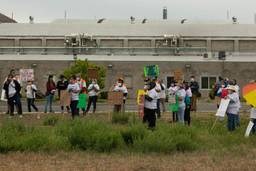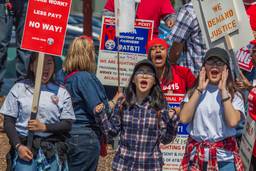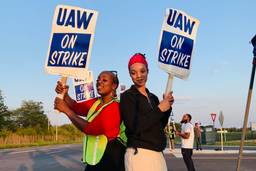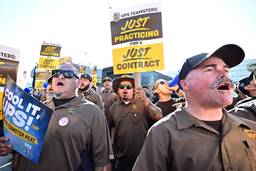Punishing Employers Who Hire Undocumented Immigrants Isn’t the Answer—Solidarity Is
David Bacon
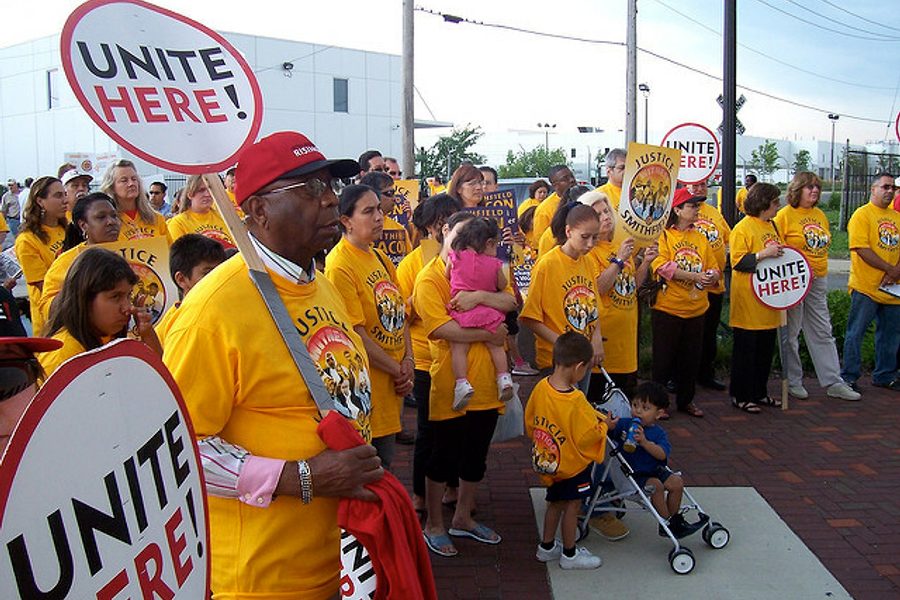
The following was written in response to a previous post.
It is clear in the article that its author, Buzz Malone, feels he is defending the interests of workers against employers. The article’s thrust, however, calls for the enforcement of employer sanctions — punishing employers for hiring undocumented workers. I’m writing this letter because, with the election of Donald Trump on the most overtly anti-immigrant platform in decades, the proposals in this article present a greater danger than they would at any other time. In many ways they line up with the kind of immigration enforcement we can expect from the Trump administration.
Malone misstates the history of the kind of proposal he is making, so I’d like to set the historical record straight. In 1986, Congress passed the Immigration Reform and Control Act (IRCA), which imposed penalties on employers for hiring undocumented workers. Malone proposes jailing employers, while the Act calls for an increasing scale of fines, but the idea is the same. That idea was in fact advanced by the AFL-CIO at the time the law was debated in Congress, using an essentially nativist and racist logic. By making it a crime for employers to hire workers without papers, the workers would be unable to work and would leave the country. Immigration would taper off because people wouldn’t come to the United States, knowing they wouldn’t be able to work. Job competition would slack off, and wages would go up because “they” wouldn’t be taking “our” jobs.
Even at the time, the most progressive unions (United Electrical, International Longshore and Warehouse Union, garment unions) and union activists fought that AFL-CIO position. They predicted that sanctions would simply make workers more vulnerable and be used as a weapon against immigrant workers when they tried to organize. They argued that instead of uniting workers against the attacks of the Ronald Reagan administration, it would divide them against each other. Those activists and unions lost the argument. IRCA became law, and sanctions went into effect.
The predictions of the law’s opponents were borne out. Whether against apple pickers in Washington state, janitors in California or meatpacking workers at Smithfield Foods in North Carolina, sanctions were used to fire immigrant workers when they tried to organize. Some workers even went to prison, charged with “identity theft” because they’d given a bad Social Security number to their employer when they were hired. The impacts among the apple pickers and at Smithfield were catastrophic. The apple drive was lost, and it took Smithfield workers a long time to recover. The janitors were more resilient, and immigrant workers won contracts at Apple and Hewlett Packard despite the firings. These are just a few of many examples.
The predictions paraded in defense of sanctions proved false. Undocumented immigration increased enormously in the 1990s and 2000s because of the impact of the North American Free Trade Agreement in Mexico, and the destruction of the economies of Central America in the wars Reagan fought by proxy. Sanctions had no effect on slowing migration. Nor did they end job competition. Instead, they gave employers an even greater advantage when the Supreme Court held that employers didn’t have to rehire undocumented workers fired for union activity or pay them back wages. We all know what happened to our wages over the years since 1986.
Some nativist and rightwing organizations argue that sanctions were never enforced because employers didn’t go to jail, as Malone proposes. Actually, a few did for document fraud, and others did pay fines. But many more workers were fired for not having papers, so workers were the ones who paid the price. This is the essential problem with sanctions enforcement — there is no way to do this without having thousands, and even millions, of people lose their jobs, resulting in evictions, hunger and enormous suffering for workers.
This is why progressive unions and activists kept organizing, and finally in 1999 won the fight at the AFL-CIO convention. The federation eventually passed a resolution calling for the repeal of employer sanctions and for the legalization of people in the United States without papers. That fight is not over, however, even in labor. In Congress, Democrats have proposed immigration reform bills (and some unions have supported them) that would strengthen employer sanctions and increase penalties. We already have an electronic verification program, E-Verify, a database maintained by immigration authorities so that employers can check the immigration status of workers. The Obama administration has required thousands of employers to access this database and fire workers accused of not having papers. George W. Bush proposed forcing employers to fire millions of workers, and was only stopped by court decisions won by California labor councils and the American Civil Liberties Union.
We are likely to see the incoming Trump administration put this workplace enforcement mechanism on steroids, even beyond what Bush and Obama did. One question for Malone is whether he will try to get his union to defend those workers when it happens, or stand aside as they lose their jobs. It is clearly not just a question for Malone, but for every union in this country — and beyond unions, for our churches and community organizations as well. Fortunately, we have a long history of people stepping up to defend their coworkers and neighbors. To its credit, In These Times has published several articles over the years covering some of those struggles.
But the other problem with Malone’s article is not just what he’s arguing for, but how he does it. He describes a false history of what happened in the meatpacking industry, and then in construction. He begins his history by describing what he allegedly saw in the 1980s: “Contract time would come up and the company would demand huge concessions they knew the workers would never accept. The union would go on strike. The company would send recruiting agents to the Mexican countryside, and right out of the pages of John Steinbeck’s The Grapes of Wrath, if they needed 500 workers, they would advertise for 5,000. Overnight, Midwest communities would be overrun with hundreds of Mexican replacement workers.”
The reorganization of the meatpacking industry certainly did involve attacks on the United Food and Commercial Workers (UFCW) — the old locals of the radical Packinghouse Workers, which had a very different policy on racism and immigration during the 1930s and 1940s when it was organized, from what Malone advocates today. Mostly the UFCW granted concessions, and the plants of the old meatpacking companies closed anyway. When strikes did take place, whether at IBP, Hormel or elsewhere, the companies did try to bring in strikebreakers. But they came in all colors and nationalities, and mostly from the areas around the struck plants. Blaming Mexican workers for lost strikes is playing the employers’ game. In a previous era it would have been accusations against Black workers, or Italians, etc. Employers did not, in fact, recruit significant numbers of workers from the “Mexican countryside.” And painting a picture of Midwest communities “overrun with hundreds of Mexican replacement workers” presents a vision calculated to incite racial hysteria, in pretty offensive language.
New meatpacking companies did open new plants in rural areas, far from the urban strongholds of the union where most old plants had been located. Production was reorganized with the introduction of boxed beef and other innovations that didn’t require skilled butchers in markets. Those plants required a large labor force in the plants, to cut the animals up, however. Wages were low, injuries were common, conditions were bad, and the people of many of those local communities could get easier jobs at higher wages elsewhere. Employers did then advertise to bring workers in. The first wave of Latino migration into Nebraska plants, for instance, came from Los Angeles. As one family member got a job, he or she would then urge others to come. Those networks eventually extended into Mexico, where people were being driven off the land by corn and meat dumping by U.S. corporations, or losing jobs in other economic reforms tied to U.S. corporate penetration of Mexico.
Employers did, and still do, advertise their jobs on the Mexican border. But the big question is what the union and other workers in the plants need to do as new workers come in, whether from Mexico or anywhere else (many now in the rural Midwest are Muslim workers from Somalia and the Sudan, for instance.)
To its credit, that immigrant workforce over the years became very active in organizing unions in those plants, from Smithfield in Tar Heel, North Carolina, to Cargill in Omaha, Nebraska. Often workers had to fight the cooperation between immigration authorities and employers, who sought to stop organizing. Malone says a group of immigrant workers he met wanted help from the union. He wrote: “We could not help them. There were few protections for them under the law, and where the law had been violated, no government agencies would pursue it.”
Hostility and inaction by the government is no news to most workers. If the union didn’t help them either, that’s not to its credit. But Malone sets up a scenario in which the union is the “we” and immigrant workers are not part of it. They are the “them.” That puts the workers on the outside — a terrible way to organize people or gain their support. But this also isn’t a real picture of the role of immigrant workers in relation to unions generally, where they have often been the sparkplugs of organizing drives, often trying to convince a reluctant union structure to support them.
Malone ignores the active role that immigrant workers have played, in cooperation with others, in organizing in the workplace, and in political action in defense of workers’ interests. Trump was defeated in the 18 precincts of South Omaha, for instance, because of the long organizing efforts of its immigrant-majority population, most of whom came to Nebraska originally to work in meatpacking plants. Hillary Clinton lost Omaha’s electoral vote because of the majority white vote in Omaha suburbs. So who was defending workers’ interests in this Midwestern city, and who was betraying them?
Malone ends his article, after claiming that “no one on the right or even the left ever talks about the one thing that could really end the problem. Imprison the employers who import, hire and exploit these workers, and all of it would end.”
All of what would end? Workers would no longer be exploited? Their wages would go up? And this, after immigrant workers were driven from the workplace? Malone then gives his answer. “Lock a handful of employers up, and all the rest would fall in line. The border crossings would fizzle out and many of the people would leave on their own.”
Sound familiar?

I hope you found this article important. Before you leave, I want to ask you to consider supporting our work with a donation. In These Times needs readers like you to help sustain our mission. We don’t depend on—or want—corporate advertising or deep-pocketed billionaires to fund our journalism. We’re supported by you, the reader, so we can focus on covering the issues that matter most to the progressive movement without fear or compromise.
Our work isn’t hidden behind a paywall because of people like you who support our journalism. We want to keep it that way. If you value the work we do and the movements we cover, please consider donating to In These Times.
